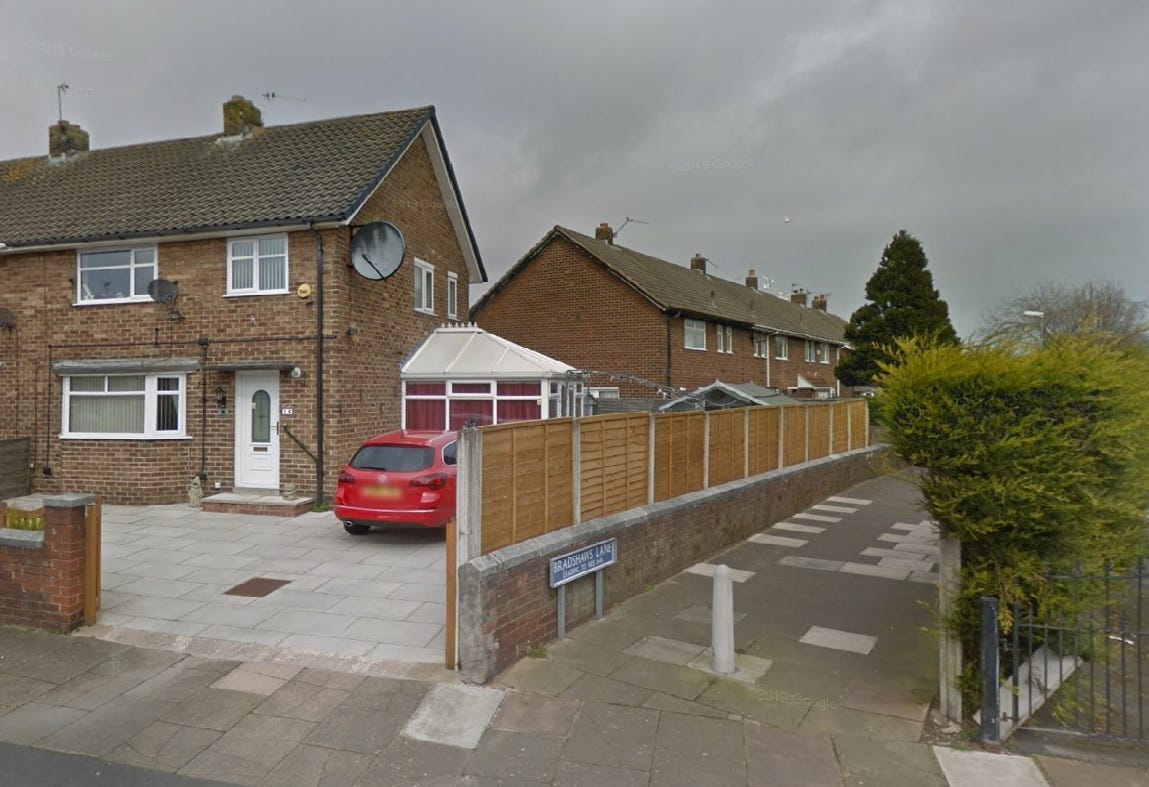Residential home objections fuel stigma against children in care
Plus: £10m Town Hall Gardens revamp honours Alice, Bebe and Elsie and BBC Radio Merseyside comes to Southport
Hello and welcome to the midweek edition of The Southport Lead.
When Sefton Council’s planning committee met last week, one of its applications related to plans to use a house into a children’s residential home - an Ofsted-registered centre where young people are looked after by staff.
The matter attracted dozens of complaints and a 90-strong petition backed by two councillors. Today’s edition focuses on this case and the wider issues it raises towards children in care and the difficulties they face in trying to take part in society when they are so often faced with suspicion and fear.
Anti-social behaviour and property value warnings made as neighbours fought against home for children in care
By Jamie Lopez and Elliot Jessett
Plans to convert an Ainsdale house into a residential children's home have been approved as concerns from neighbours highlighted the stigma facing its potential users.
A house on Bradshaw Lane will be used as a home for two children aged 7-17, with round-the-clock supervision provided by qualified staff. The home is to be registered and assessed by Ofsted and operated by ECS Care, a new company whose management have decades of experience in the industry.
At a planning committee last week, one neighbour spoke of fears that those already living nearby would be “left vulnerable or disadvantaged” by having the residential home in their neighbourhood.
Debbie Mercer said: “Residents are acutely aware of the potential for anti social behaviour from the siting of this facility.
“We do not wish to experience this behaviour and have it impact our lives and the lives of our families. Neighbouring properties next to and opposite the entryway are at a heightened risk of such behaviours and are open to increased criminal activity due to their location.
“In Bradshaw’s Lane, we have already experienced this type of behaviour in and around the entryway without the facility being present. It is regularly documented in the minutes of the Friends of Ainsdale Village Park working group that the entryway is used by teenagers now for drinking alcohol and drug misuse.”
Ms Mercer was far from alone in having such concerns, with 90 people signing a petition against the proposed use with the backing of two councillors and 32 letters of objection submitted. Sefton Council no longer makes letters of objection public but a report summarising them included:
fears of damage to properties
location near a park used by children is “inappropriate”
negative effect on valuation of neighbouring properties
increases likelihood of entryway becoming hotspot for anti-social behaviour
“don't want police cars down our road everyday/ night”
In response and in support of the application, ECS Care director Peter Kennedy said that while some of the concerns raised were fair, others were “factually incorrect, and in a few cases, some are upsetting.”
He added: “Children who are placed into care have already experienced trauma, including the emotional impact of being removed from their family. To then be stereotyped or viewed as a threat can be deeply damaging, especially when referred to as ‘those type of people’ by some of the residents.”
Meanwhile, a planning officer’s report noted that Merseyside Police had been consulted and raised no objections. The officer, who recommended the application be approved, added that “there is no evidence to support the view that the proposal would increase crime (or fear of crime) and antisocial behaviour in the area”.
Such concerns are typical of those facing children in care and care leavers across the country. Applications to convert houses to residential children’s homes regularly face opposition from neighbours, something which some would argue is often rooted in a large sense of NIMBYism and negative views of children in care.
According to the Together Trust, a charity offering care, special education and community support services in the north-west of England, such facilities are “the best and only suitable type of accommodation for children of all ages, other than foster care”.
The complaints also highlight the barriers being put up against children in the care system and a common assumption they are inherently “bad” or problematic. Keith Bishop, a foster carer, former youth worker and is now a senior lecturer in Children, Young People and Families at Newman University in Birmingham, believes such attitudes are deep rooted in society.
He said: “Dating back to the time of workhouses, the entire system is based on the assumption that they are the wrong sort of children, who come from the wrong sort of families. You know, those feckless, troubled families whose children need rescuing by the middle classes.”
Katharine Sacks-Jones is chief executive of Become, the national charity for children in care and care leavers which warns that one in three care-experienced young people become homeless within two years of leaving care. She wants to see those representing councils do more to advocate for the needs of such young people.
Writing in the Local Government Chronicle this week, she said: “Local authorities are the corporate parents of children in care and that role extends to elected members. A corporate parent is not just a legal title – it's a moral commitment, which means advocating for the welfare of a child in care with the same energy and urgency as you would your own child.
“Nothing could be more important in that commitment than making sure children in care have somewhere safe to live, even if this may incur opposition from some residents.
“There are currently more than 84,000 children in care in England. Far too many are being let down by a system that hasn’t prioritised local homes for them. Without enough safe, stable homes in their area, children are separated from their brothers and sisters and sent miles from everything they know – sometimes moved multiple times a year, without any notice.
“With a shortfall of 5,000 foster carers and more carers retiring faster than are being recruited, the pressure on residential care continues to grow.”
Similar pleas were made by Peter Sandiford, the former chief executive of the Independent Children's Home Association (ICHA). He has previously highlighted the unease and even hostility with which some communities react to residential children’s homes
Often, he said, people “seem to believe that children who require care away from their families are criminals rather than victims” but in fact are often survivors of trauma who should be helped to achieve their full potential.
Speaking to the BBC, Mr Sandiford said: "Children living in children's homes are the responsibility of society. Local politicians and national politicians have joined with local residents to fight the opening of children's homes. My belief is those leaders in society should be challenging those myths - that nimby-ism - rather than joining in."
Ms Sacks-Jones warns that complaints such as ‘changing the character of neighbourhoods’ or affecting property values risks stigmatising children who have stigmatises vulnerable children who have faced trauma, abuse or neglect while not being grounded in fact. Rather than amplifying such concerns, she wants to see those in power offer an alternative viewpoint.
She said: “In their role as a corporate parent, councillors have the power to drive improvements and progress through their decisions and advocacy. When residents object to children's homes, that is a moment to engage, inform and challenge stigma.
“Visit children's homes in your area and speak to the children directly about their needs. Children in care are just like any other children. They want to live in a nice house in a good area, near their school, friends and the places where they like to play.
“We know of councillors who’ve reminded residents of that and used their position to explain the urgent need for more children's homes and the importance of integration, not isolation. These leaders didn't dismiss concerns; they redirected the conversation toward empathy and evidence.”
These stigmas are felt most keenly by the children themselves, with them potentially being made to feel unwelcome in a new community when they should be being offered a fresh start.
Discussing exactly this issue, one anonymous care leaver wrote: “When a stigma exists [...] it can cause children who are in care to feel like outcasts and a lack of understanding as to why they may be academically slightly behind other children their age or not reaching their goals as quickly can all play a part in their school life.
“If a child is given a label from a young age, that child is literally being taught that they are destined to be a certain way and no amount of trying will result in any different.
“That is exactly why attitudes need to change within schools and society.”
In the Bradshaw’s Lane case, two storey, three bedroom property will be used for up to two children at a time. Those with previous or outstanding criminal matters will not be accepted at the home.
According to ECS Care’s application, you people will not be “allowed to leave the property or roam the area unattended” but will instead be encouraged to take part in positive, supervised activities and clubs in addition to attending school full-time.
It adds: “We are passionate about inclusion and strongly support our children in this area. We are proactive in encouraging our children to form new relationships and sustain longlasting friendships with their peers.”
The application also highlighted Sefton Council’s own data which shows that the borough currently has more than 600 children in care and around 90 children placed in unregulated residential homes, highlighting the need for facilities such as this one.
At the planning meeting, Mr Kennedy said that ECS Care was a relatively new company and was in the process of establishing systems which would maximise the care experience for young people. He detailed how the company’s most recent Ofsted inspection in May resulted in ‘good’ grading across all areas.
He: “Both myself and Anthony [company partner] have over 50 years of combined experience supporting some of the most vulnerable children in Sefton and neighbouring local authorities through our community interest company ‘Engaging Change’.
“I personally hold the highest level of qualification required by Ofsted to manage a children’s home whilst Anthony has almost completed his and all of our staff are fully trained and hold the appropriate qualifications and mandatory training.”
Mr Kennedy concluded his speech by saying: “My final point is this, if Bradshaw’s Lane and Ainsdale isn’t deemed as a suitable area, then where is?”
The committee approved the application with conditions including to add soundproofing to the adjoining property and that the children living there must be” from, or with family, or have a long term connection to Sefton Borough”.
Recommended Reading
🎙️ BBC Radio Merseyside’s Breakfast Show is spending this week in Southport, with each day broadcasting from a different location. Its interview with the teenage girl who survived last year’s attack is a reminder of just how emotionally and mentally strong some people can be
💐 The BBC has also been speaking with the family behind June’s the Florist as the much loved shop celebrates its 100th anniversary
£10m Town Hall Gardens transformation to honour Alice, Bebe and Elsie
The Town Hall Gardens will be transformed in a £10m regeneration designed in memory of the Southport attack victims.
The space outside the Atkinson will be redesigned to host open-air performances, markets and community events as well as offering a shared space for the community to reflect. It is designed to provide a child friendly and safe platform for musicians, dancers, artists, culture lovers and more, ensuring it remains a vibrant hub for generations to come.
Designs have been led by the families of Alice Da Silva Aguiar, Bebe King and Elsie Stancombe. After their tragic deaths last year, the space first hosted an emotional vigil and in the following weeks was filled with floral tributes.
Inspired by the girls’ love of dance, music and the arts, the new town square is designed to be a community-focussed space that can host events and other large gatherings. Their families envision it as a safe and joyful place, full of energy and creative expression, particularly for Southport’s younger generations.
In a joint statement, the three families said: “This project is a vision we have all shared for some time, which is rooted in love, resilience and unity. We wanted to find a way to thank the people of Southport for standing shoulder to shoulder with us. Your compassion has never wavered and your strength has helped carry us forward.
“The regeneration of the Town Hall Gardens will become a legacy inspired by our three beautiful and amazing girls and it will be a space that is loved by many generations to come. It will be a place of joy, hope and community. A vibrant place where children and families can feel safe, connected and celebrated in the heart of our town.
“We are grateful to the Prime Minister and Deputy Prime Minister, to Sefton Council and to the Liverpool City Region Combined Authority and each of the region’s Councils, for listening to our voices and helping us achieve the funding we need for this project.
“This is only the beginning, and we all walk forward together with our amazing community in Southport, with purpose and hope.”
Sefton Council has worked with the families to secure funding for the project, with the local authority and the Liverpool City Region Combined Authority each providing £2.5 million and the UK Government allocating £5 million to the works.
Ahead of the full-scale transformation, temporary improvements have been made to the Town Hall Gardens space to enhance its appearance and atmosphere. Floral planters were installed last month to bring colour and vibrancy to the area during the spring and sSummer, creating a welcoming and uplifting space for visitors and residents alike, before works commence on the space in due course.
These enhancements are designed to serve as a symbol of renewal and positivity, ensuring that the gardens remain a beautiful and inviting part of Southport throughout the transition period.
Deputy Prime Minister Angela Rayner, who along with Prime Minister Keir Starmer met the families again this week, said: “The strength of everyone in Southport has been beyond words and I am delighted that we are able to help with the families’ vision to give back to that amazing community, who continue to give everything they can to those families and victims
“We are committing £5 million to help create a safe community space for connection, reflection, and renewal – a lasting symbol of hope, guided by the strength of the families and wider community.”
Beyond its cultural significance, the regeneration project will play a key role in Southport’s ongoing economic recovery and growth. By creating a flexible high-quality public space, the project will attract visitors, support local businesses, and complement other landmark public and private sector led developments in the town.
The project will also be accompanied by an exciting events programme for Southport for the coming years and beyond, helping to make Southport’s town centre as exciting a place to be as possible for children and families.
Southport’s MP Patrick Hurley added: “This legacy project, to renovate, refurbish and remodel the gardens outside The Atkinson will be a nod to their memory and a flare of bright optimism for the future of Southport.
“Southport’s community is a strong one. We gathered spontaneously and collectively in the gardens outside The Atkinson, standing defiantly in the face of evil.
“So it is fitting that as time goes on, these gardens are at the heart of the proposal for the renewal of Southport, not just to acknowledge the awful events of July, but more importantly, to recognise the spirit of the town, its people and the families of those affected in bringing Southport back into the light.
“I’m so pleased to be able to work with the national government, the local authority, and others to support the families as they continue their recovery and to ensure that this investment into Southport is made in the best interests of all.”






